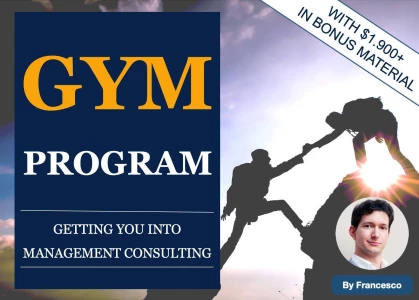What is the best way to structure a case in which a PE ist considering an investment?
Thanks a lot in advance!
What is the best way to structure a case in which a PE ist considering an investment?
Thanks a lot in advance!


Hi Anonymous,
quoting a previous post that I wrote, I would consider the following steps:
1) GOAL CLARIFICATION. It is always good to start with the end in mind – thus what is the specific reason why they want to buy the company? Just make profits reselling in 3 years for a higher price? Benefit from synergies with a portfolio company? Test the market for a bigger acquisition?
2) INDUSTRY. There are two macrovariables here.
You should present this area connecting with the goal, and not purely listing the elements to analyse as if it was a laundry list. The best way to do so is explain how a certain variable will help you to achieve you goal. Eg, if your goal is to increase revenues, don’t simply say “I want to look at growth, size and BTE”, rather “I want to look at growth and size – this will tell me if the market has the potential to provide enough revenues for our client. I would also like to check BTE, to understand which are the obstacles in entering such a market and thus increase revenues”.
3) COMPANY - TARGET OBJECTIVE FEASIBILITY. Here you want to check the fit between the client and the selected industries.
In the first point, you will probably have to go through a profitability/revenue/cost framework, to calculate the effective result.
4) PRICE AND CAPABILITIES. Once you know the industry is attractive and you can reach you goal, you should consider if the price is fair and you have enough capabilities
You can find more information on the DCF analysis at the link below: https://www.preplounge.com/en/consulting-forum/case-net-present-value-calculations-325
5) RISKS AND NEXT STEPS. What are the major elements that we should further analyse based on the previous points (eg regulator decision, potential other targets to consider, implementation risks, exit strategies)?
Hope this helps,
Francesco


Hey anonymous,
Let me recover one proposal I ellaborated just a few days ago to a (relatively) similar query.
1. analyze the market/external factors
how sizable is currently the market and any growht expectation into the future? (demand side)
what about the competitive landscape? (supply side)
any relevant regulations/barriers to entry? (supply side)
2. analyze the company internal factors
what's the historical financial performance (traditional profitability tree; include benchmark vs. competitors and market share)?
do they have the right/needed capabilities (production, distribution, transport, management)?
3. transaction details
adequate pricing (valuation piece)
how to finance the transaction
exit strategy
Best
Bruno
I agree with both answers. Maybe to get a little sharper on two points:
1) goal clarification --> if it's a PE firm you can ask immediately what is the exit hurdle rate and time horizon of investment. It's a fair assumption that a PE doesn't acquire for just "making a profit" but has a clear threshold in mind. Also In terms of synergies, that goes back to how do those synergies turn into reaching the threshold for both current target and old portfolio company (very rare)
2) valuation --> while is good to list all methods, would feel that suggesting to do a DCF during a live interview would be sadist unless a table with discount rates for all years is provided. My preference always goes for multiples and then ask if they do have a DCF done to compare between the two.
hope it helps!
andrea

Hi,
At the consulting interviews you may have two types of PE cases:
You can check which type of case you have by asking whether the PE fund already has another company in the portfolio for the synergies.
1. For DD you can use the following structure:
Market
Competition
Company
Feasibility of exit:
2. For Synergies Calculation you can use the following structure:
In private equity interviews, the cases will be much more detailed in financial part. Depending on the company you'll need to:
Good luck!

Hi
I don't have personal experience interviewing with PE firms, but according to my friends:
1. The focus is on valuation cases (duh :P) - these require you to estimate a target company's revenue sources, costs and do some basic DCF calculations to arrive at a price that they should pay for the target.
2. The cases are math-heavy and you are required to be quick on your feet with calculations and estimates.
3. Be clear on the personal interview front - why do you want to join PE? How do your story and motivations lead up to this?
All the best!









